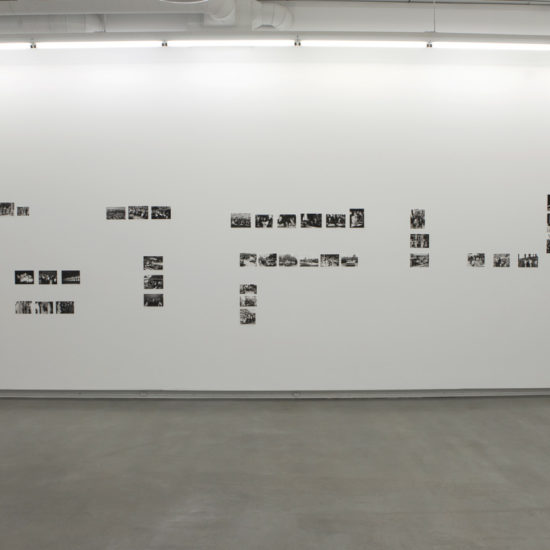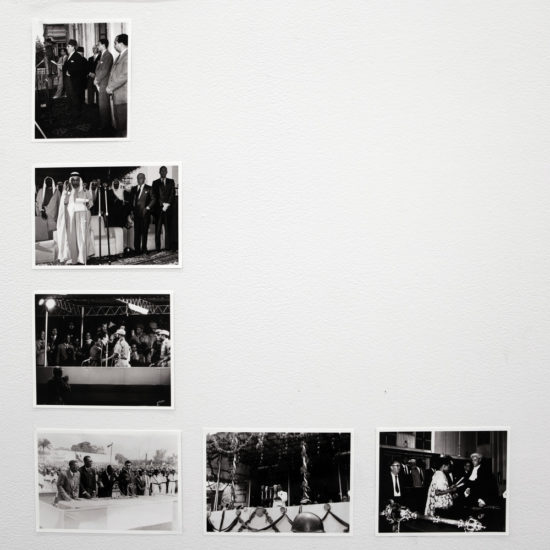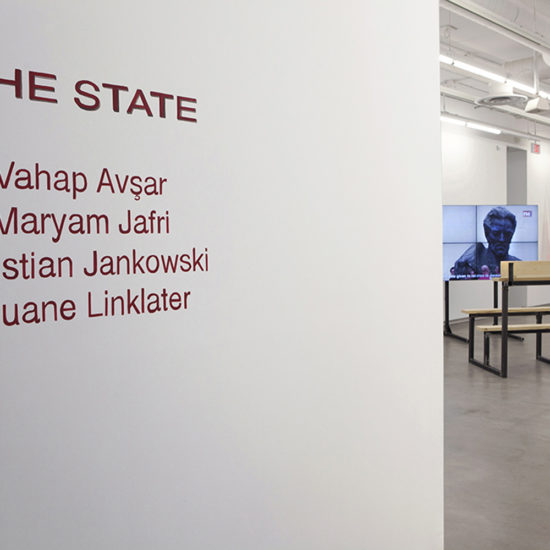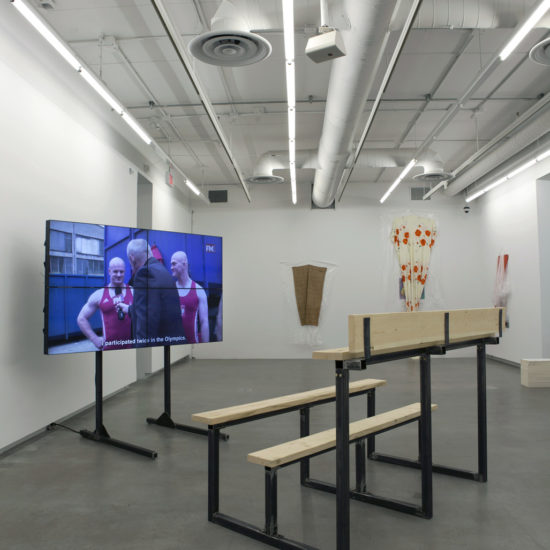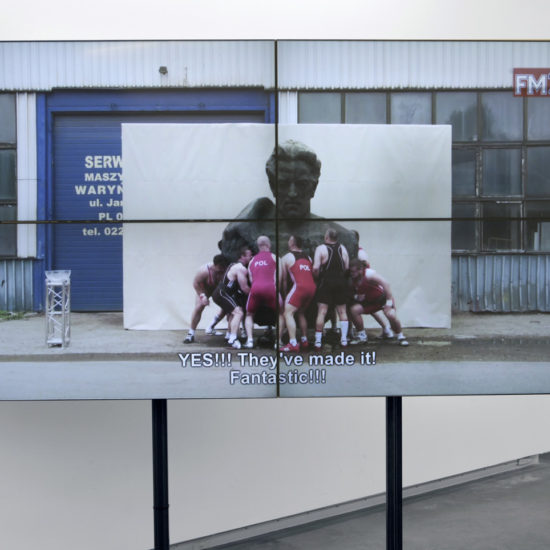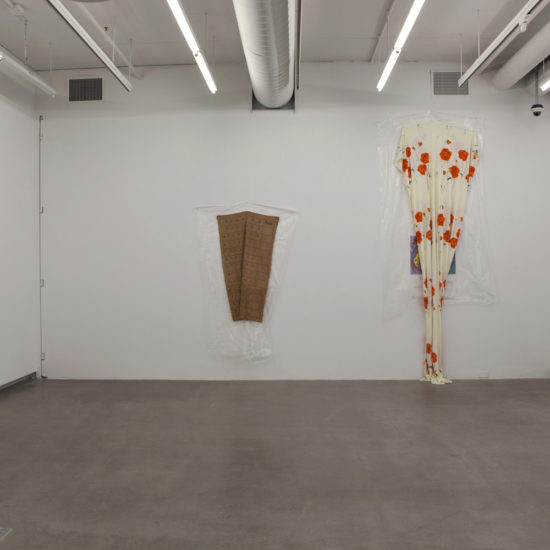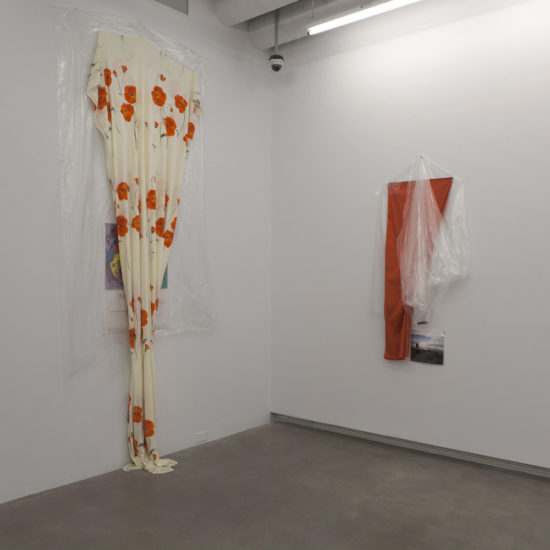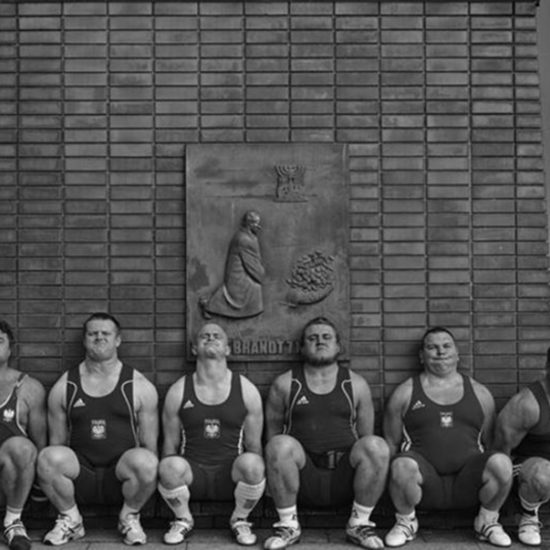A nation-state’s official representation of itself and its people is a propaganda that can be both subtle and flagrant. There is a brashness that shines through some of the most unashamed and overt state-controlled representations of nationhood. The happy, strong, red-faced worker of Stalin and Mao’s Social Realism still propagated in North Korea is a most blatant example. The conflation of capital and a nation’s history is embedded with most national currencies, exchanging hands daily. A paramount example is Colombia’s currency, the bolivar, named after Simón Bolívar, a leader in establishing the country’s sovereignty as well as independence for several South American countries. All nations represent themselves in some manner, asserting their identity through flags, colours, historic moments, heroes, mythologies. The Canadian maple leaf, the beaver and Royal Mounties seem more like comic book caricatures than actual signifiers of nationhood, but they are nevertheless symbols circulated to define borders and unify those within them. There is at times an anxiety that can be felt as a nation-state so intently tries to control its identity. The work in this group exhibition picks up on this anxiety of trying too hard, distilling how through government propagation nations represent themselves and define citizenry. All the works in The State begin with officially sanctioned or controlled forms of national representation, using authorized monuments, or images of parades, ceremony, and ancestry as starting points. The artists leave these authoritative representations untouched, only manipulating the way they are encountered, presenting them through archive or reproduction, and animating them through performance or aesthetic gesture.
Vahap Avşar, Lost Shadows, [AND Museum], 2015 is a series of photographic reproductions originally produced in the late 1970s by the Turkish printer “AND Postcard Company”. They commissioned photographers to capture images of cities, towns, ceremonies and tourist sites in Turkey to be made into postcards intended for domestic travelers visiting places within their own country. The vast archive of 15,000 images came into Vahap Avşar’s possession in 2010, many of which are nearly identical and most never having been printed. Avşar selected for his first iteration of Lost Shadows a series of twelve previously unprinted images. He chose images of moments that were slightly off – a lull in a parade, a solider caught in the frame, a group of on lookers staring into the camera – to print in the format of the original postcards, stylistically reflective of the time period. In one image there is a white car pulled off on the side of a mountain road disrupting an otherwise idyllic vista. The model of car, a white Renault 12, was commonly used by the Turkish secret service, and alludes to a control that was building and visibly present after a military coup in 1980. The effects of this control are sometimes directly present in the AND company’s photographs, capturing government agents and soldiers who were likely monitoring the photographers as well as directing subject matter that often contained military regalia and political rallies. Avşar’s reproduction and redistribution of the source of these postcards pick up a tension and political current that emerges as a shifting government’s attempt to establish its authority infect how a nation represented itself.
Maryam Jafri, Independence Day 1934-1975 (2009 – ongoing) is an historical unfolding of how new governments ceremonially begin their independence from colonialist control or civic revolutionary action from previously ensconced governments or aristocracies. Jafri amassed an archive of hundreds of images capturing the foundational moments of new states establishing themselves through ceremony. Her research focuses on the manner in which many African, South East Asian, and Middle Eastern countries represented the signing over of a nation’s care to a new government order. What is repeated in these archival images is a staunch old guard posturing that invades the ceremony and celebration of new beginnings — a white washing of sorts where the pomp and formalized ceremony creates a unifying blanching effect. Of course there are many differences, but the uniformity of the formal rites of passage represented through this documentation draws likenesses that are bound to the past, familiar to colonial statehood and aristocratic pageantry. The presence of British royalty at some ceremonies, the bejeweled formal attire worn by the new heads of state, military marching and grand parading undo the optimism of change as the rigidity and uniformity of state ritual reflects its predecessor.
Christian Jankowski, Heavy Weight History (2013) immediately reads as a parody of televised sports programs with its play-by-play voice-over by a well-known sports announcer, athlete commentary and interviews, slow motion replays, and close ups on action, but this genre reference is merely the frame that serves as comedic ground to represent a nation’s erratic attempt to define itself. For this work Jankowski hired eleven members of the Polish weightlifting team to lift historic and symbolic sculptural monuments in Warsaw. The monuments range from celebrating Polish/Soviet relations to a larger than life sized bronze sculpture of Ronald Regan. The weightlifters were asked to lift seven sculptures, to varying success. A statue of The Mermaid of Warsaw, a symbol of the city and its coat of arms, rises with relative ease, but Regan and a statue of Ludwik Warynski, a key player in defining The People’s Republic of Poland in the late 19thcentury, poses more of a challenge. Jankowski plays up the varying ease and effort needed to elevate the sculptures as relative to their historic significance and their continued relevance in defining Poland. These monumental historic markers are common to most cities and nations, but in Warsaw, they seem to convey a city and nation that is unsettled confused in its past and current identity.
Duane Linklater, The Jay Treaty was established in 1794 to settle conflict between the US and Britain, whose relations were strained mainly by imbalanced importing and exporting practices. As part of this treaty, both nations acknowledged the distinct and long established movement of aboriginal peoples across Canada and US borders, recognizing their pre-existing rights and exempting them from paying duty on goods brought across this boundary. As the Canadian government gradually developed its own identity, it did not acknowledge the Jay Treaty, and in 1956 the Supreme Court of Canada ruled that the treaty wouldn’t be enforced by the nation because it wasn’t implemented by them. The US applies the Jay Treaty through blood quantum tests based on a person’s ancestral history. If they have 50% aboriginal blood that person can live and work in the US without any repercussions of being deported. Duane Linklater has two letters that identify his paternal heritage through his great and grand-parents as 100% Native American, proving him twice to be 50% aboriginal and thus eligible under the Jay Treaty. These letters from 1999, signed by band Chiefs from Fort Albany and Weenusk First Nation, are joined in a white frame, placed under glass and form the central vertical element in an abstract wall hanging. The letters rest between clear plastic sheeting and a vibrant pink cotton cloth that drapes behind it. Folds and twists in the plastic sheeting cross the front of the framed letters partially concealing their content. This piece titled border (2016) is one of four new sculptural assemblages by Linklater that amalgamate printed images into draping gestural abstractions that bend images of nationhood into formal compositions. Coup (2016) includes a stack of digital prints of the artist looming large in the foreground of Robert Smithson’s Spiral Jetty, which are nearly hidden as they are tucked into folds of fabric and plastic, placing Linklater in the landscape but also engulfing and erasing himself. In body(2016), an archetypal Wood Land School style painting, Untitled (Shaman Traveller to Other Worlds for Blessings) (2009) by Norval Morrisseau, printed as a poster by the National Gallery of Canada, is casually pinned low to the wall behind a floral fabric of poppies that partly covers it. The image on the poster both revealed and concealed, like the clarity of his blood quantum and his nationhood, which become blurry under thin plastic folds.
Curated by Jenifer Papararo
Vahap Avşar is a Turkish born, New York based interdisciplinary artist whose practice incorporates a range of media and techniques, including photography, performance, painting and installation. His work is deeply engaged with history, politics, and collective memory, often exploring the effect of mass media, the consumerist society, and imperialism. Avşar received his BFA from the Dokuz Eylül University and his Masters in Design and Architecture and doctoral degree in painting from Bilkent University Fine Arts Department. His work has been the subject of numerous solo exhibitions including SALT, Istanbul; Black Album, Rampa, Istanbul; iBerlin, TANAS, Berlin; Noneisafe, Charles Bank Gallery, New York; Come Who Ever You Are, W139, Amsterdam, andMyths, Galeri Zon, Ankara. His work has been included in several group exhibitions include Artists’ Film International, Whitechapel Gallery, London; Artists’ Film International”, Istanbul Modern, Istanbul, 2015; “Too Early, Too Late”, Pinacoteca, Bologna, 2015; “Zwölf im Zwölften”, TANAS, Berlin, 2011; Second Exhibition, ARTER, Istanbul, 2010; 5th International Istanbul Biennial, Istanbul, 1997. In addition to his artistic practice, Avşar is the co-founder of Brooklyn Industries.
Maryam Jafri is an interdisciplinary artist based in New York and Copenhagen. Her research-based, diverse practice spans video, sculpture, performance and photography. Often working with documentary material, Jafri uses the archive as a material and conceptual jumping off point. Jafri often parallels historical documentation alongside fictionalized narratives, challenging conventional notions of progression and historicity. She holds a BA in English & American Literature from Brown University, an MA from NYU/Tisch School of The Arts, and is a graduate of the Whitney Museum Independent Study Program. Recent solo exhibitions of her work includeGeneric Corner, Kunsthalle Basel; The Day After, Betonsalon, Paris;Mouthfeel, Gasworks, London; and Backdrop, Bielefelder Kunstverein, Bielefeld, Germany. Jafri’s work has been included in numerous group exhibitions, including the forthcoming Sao Paolo Biennial 2016; Belgian Pavilion, Venice Biennale; Gothenburg Biennial; Meeting Points 7, When Attitudes Became Forms Become Attitudes, CCA Wattis, San Francisco and Museum of Contemporary Art, Detroit; and Taipei Biennial, among others.
Christian Jankowski is a Berlin-based artist whose practice often takes up the performative as a way to move between reality and fiction. He frequently engages members of the public as collaborators, making them “coauthors” who participate in shaping his work. Solo presentations of his work include the forthcoming The Legend of the Artist and other Construction Sites, HAL, Berlin, Germany; Retrospektive, Contemporary Fine Arts, Berlin, Germany; Heavy Weight History, Lisson Gallery, London, UK; Casting Jesus, MARCO, Rome; The Finest Art on Water, Frieze Art Fair, London. In addition, Jankowski participated in the Venice Biennale in 1999 and 2013 as well as the 2002 Whitney Biennial. Jankowski is currently working as Chief Curator of the major European art exhibition Manifesta 11 in Zurich.
Duane Linklater is Omaskêko Cree, from Moose Cree First Nation in Northern Ontario and is currently based in North Bay, Ontario. Linklater attended the Milton Avery Graduate School of Arts at Bard College in upstate New York, USA, completing his Master of Fine Arts in Film and Video. He has exhibited and screened his work nationally and internationally at the Vancouver Art Gallery; Family Business Gallery in New York City; Te Tuhi Centre for Arts, Auckland; New Zealand, City Arts Centre, Edinburgh, Scotland; Institute of Contemporary Arts Philadelphia and the Utah Museum of Fine Arts, Salt Lake City. His collaborative film project with Brian Jungen, Modest Livelihood, was originally presented at the Walter Phillips Gallery at The Banff Centre as a part of dOCUMENTA (13) with subsequent exhibitions of this work at the Logan Centre Gallery at the University of Chicago and the Art Gallery of Ontario, Toronto. Linklater was also the recipient of the 2013 Sobey Art Award. He is currently represented by Catriona Jeffries Gallery, Vancouver.
Plug In ICA gratefully acknowledges the support of the Canada Council for the Arts, the Manitoba Arts Council and Winnipeg Arts Council. We thank the Andy Warhol Foundation for the Visual Arts for their support of our 2016 and 2017 program, and we extend gratitude to The Winnipeg Foundation and all our generous donors, valued members and dedicated volunteers. Vahap Avşar’s Lost Shadows was first commissioned by Protocinema, Istanbul and NY; P!, NY.
For general inquiries please contact: info@plugin.org
For media inquiries please contact: Sarah Nesbitt at sarah@plugin.org or by phone at (204) 942-1043 ext. 27



![Avsar_Lost Shadows, [AND Museum], 2015Lost Shadows, [AND Museum], 2015_2](https://plugin.org/wp-content/uploads/2018/01/Avsar_Lost-Shadows-AND-Museum-2015Lost-Shadows-AND-Museum-2015_2-550x550.jpg)
![Avsar_Lost Shadows, [AND Museum], 2015Lost Shadows, [AND Museum], 2015_7](https://plugin.org/wp-content/uploads/2018/01/Avsar_Lost-Shadows-AND-Museum-2015Lost-Shadows-AND-Museum-2015_7-550x550.jpg)
